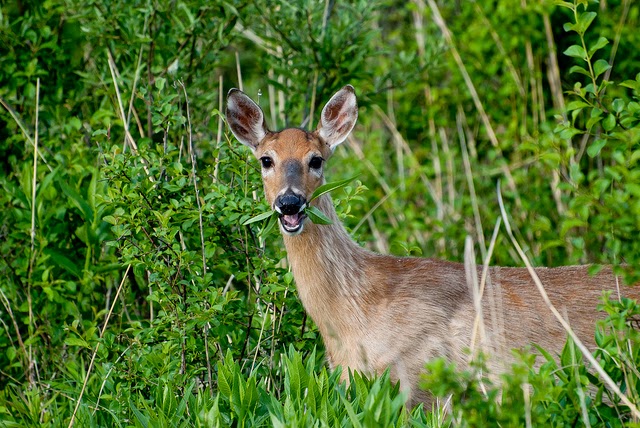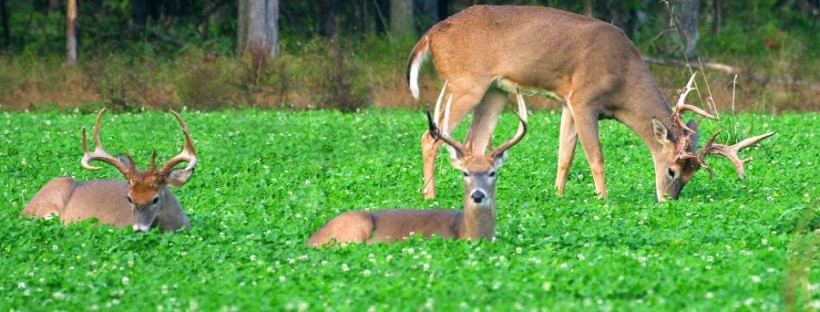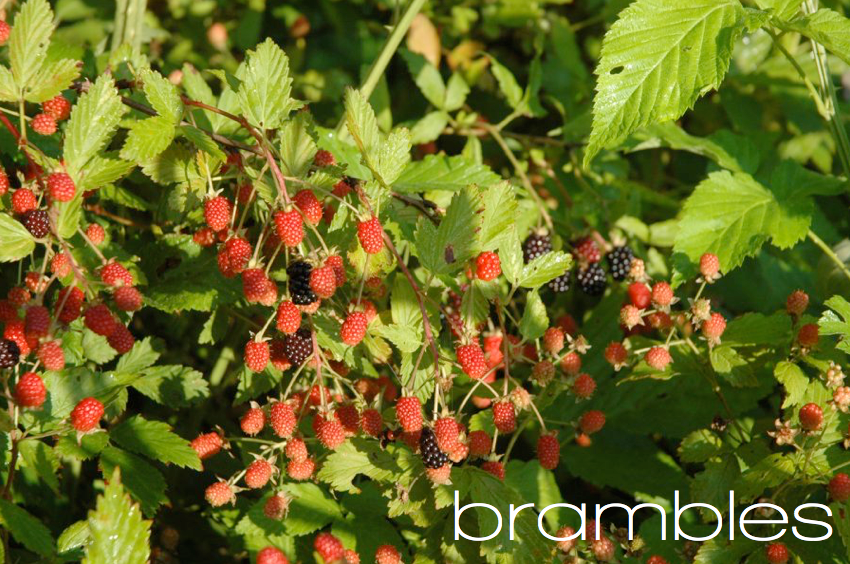
Brambles (i.e. thorny, tangled blackberry or raspberry plants) are perennial plants popular for deer. They are found in the wild, but can also be cultivated along the edge of a food plot to provide an additional (and tasty) source of nutrition for deer throughout the fall, when they bear their fruit. Careful, though – they can get out of hand pretty quickly and take over your plot!
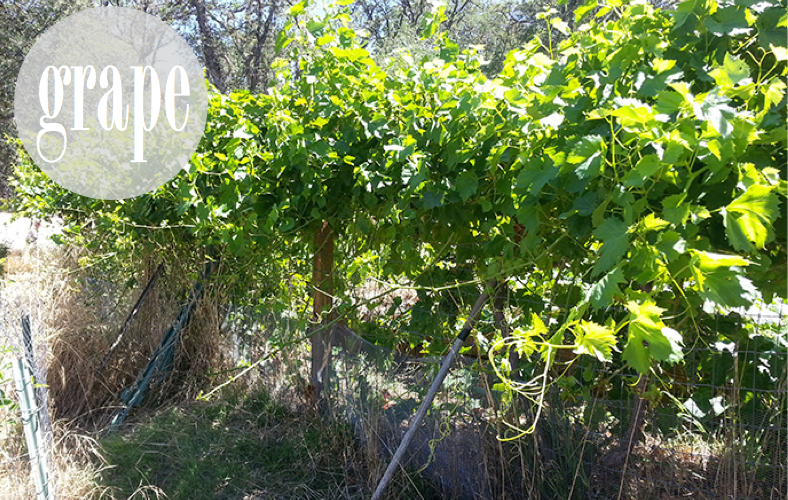
Deer love grape vines, like the muscadine variety, which ripen in late summer and into early fall. They will eat the both the fruit and the tender leaves and twigs along the climbing vines. Like brambles, grape vines can be cultivated, and are found in a wide variety of places. Their ability to climb helps them succeed even in shady wooded areas.
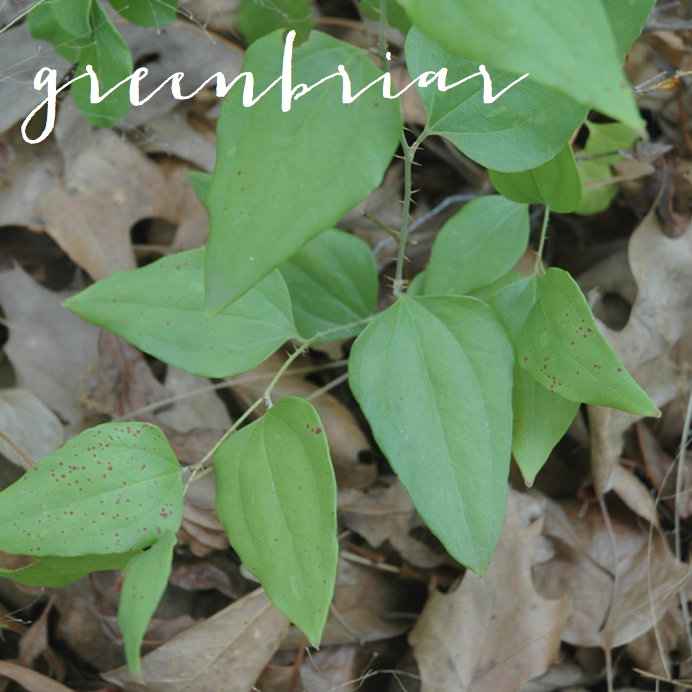
Greenbriar grows similar to brambles, with a strong root system that can easily take over food plots if not managed. It can grow into dense thickets that provide excellent cover for deer and help them feel less exposed. Cultivate greenbriar along a fence or hedgerow along with some brambles, and you’ve got a guaranteed snack bar that the deer will undoubtedly frequent. This is also a good way to determine your deer-to-food ratio – if the plants are essentially mowed to the ground, you’ve either got too many deer or not enough food (or a combination of both). If they look somewhat eaten (or not at all), you’ve either got plenty of food or… no deer. Let’s hope it isn’t the latter.

Ahh, soybeans. A superfood of deer food. Soy is incredibly high in protein, and a large plot can last from early spring on through the winter months if the deer don’t mow it down first. It thrives in the summer, which is a key time of year for deer – antlers are returning, fawns are growing, and does are lactating – and you want to make sure they are getting the necessary amount of protein. Just make sure you plant an ample supply – deer can make quick work of a small plot, and you don’t want to be left with nothing when fall turns to winter and they are forced elsewhere to find food.
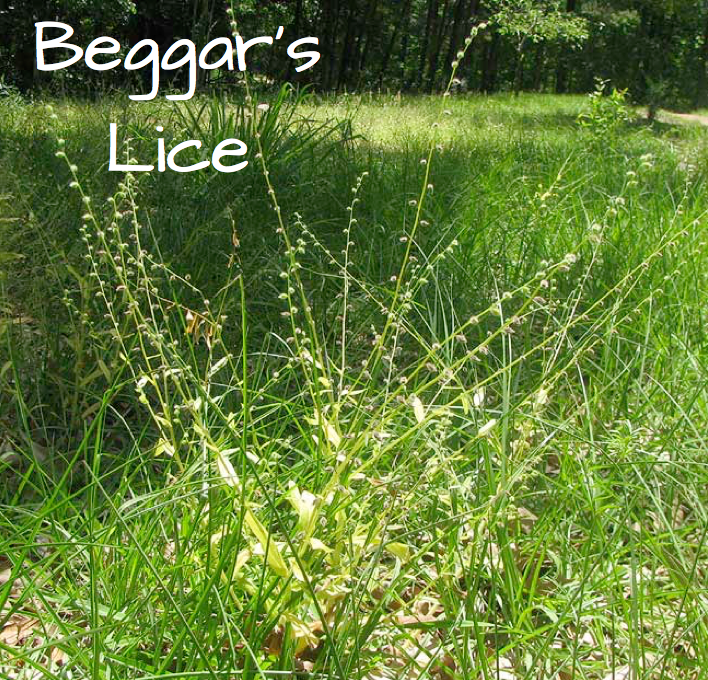
Ever come in from the woods and you’ve got dozens of small, fuzzy little pods stuck to your pants? Meet beggar’s lice, another browse enjoyed by deer that grows naturally in the wild. It is very similar to soy in terms of protein levels, grows during relatively the same time frame, and can be planted and cultivated if little is naturally produced on your land.
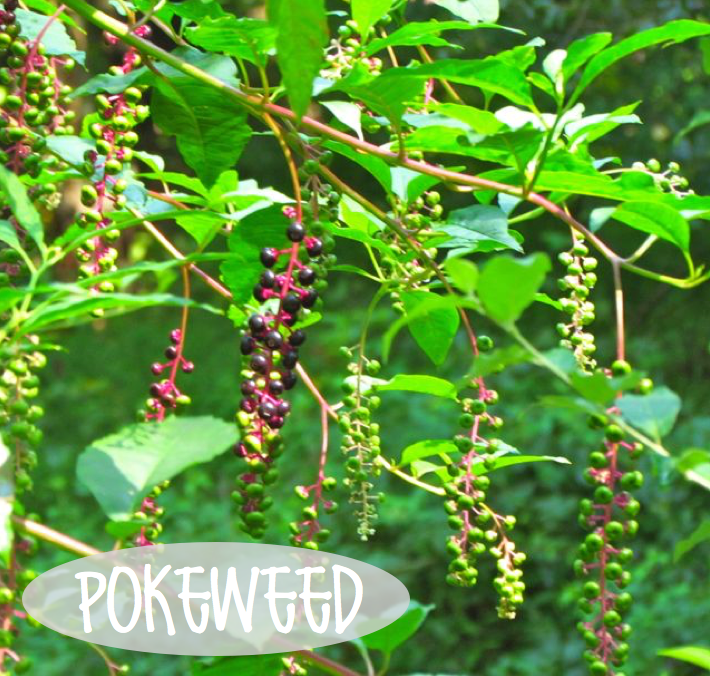
Pokeweed, known by many other names like poke and pokeberry, is a hardy perennial weed with dark purple berries sprouting from a magenta stem. Although it is poisonous to humans, deer readily enjoy this plant, which is high in protein and easily digestible. Pokeweed has a strong root system, and is therefore is able to grow in various soil types, sun or shade, and can withstand wildfires or controlled management burning.
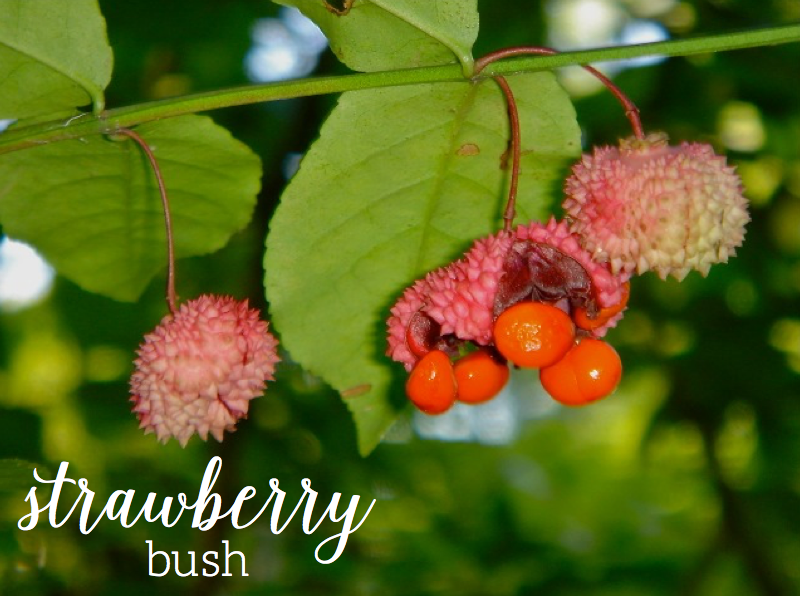
The strawberry bush, often referred to as “whitetail ice-cream,” is a sweet and delicious favorite for deer. It produces tasty fruit throughout the summer, but deer will devour the entire plant. They can plow through strawberry bushes like a hungry man at a barbeque buffet, eating them down to the stem in no time at all. If you’ve got these tasty treats out for deer, don’t expect them to last!
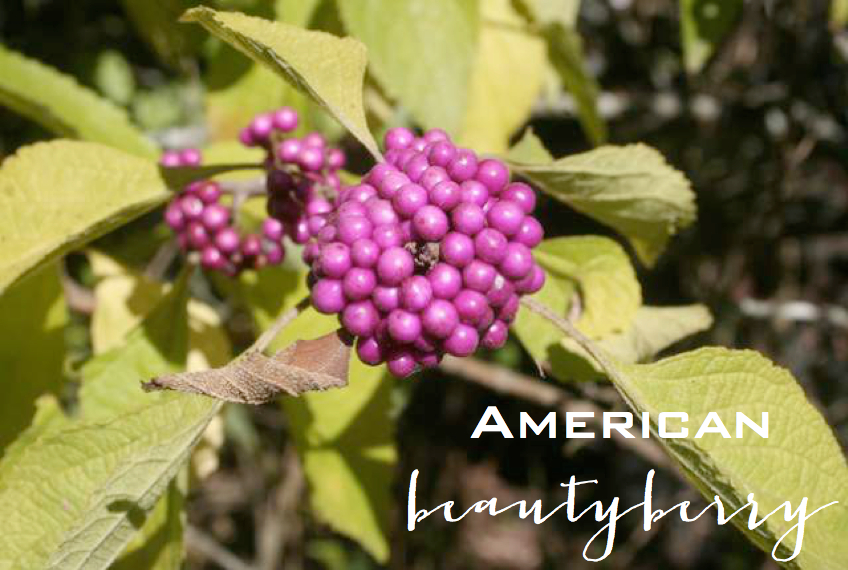
American beautyberry is another fruit-producing perennial shrub that whitetails adore. Deer will eat the leaves and stems of the beautyberry throughout the summer, but the moisture-rich fruit itself is key. The little berries remain on the plant into the winter, even after the leaves have dropped. PS: This plant can work double duty – you can crush its leaves and rub them on your skin to repel mosquitoes!
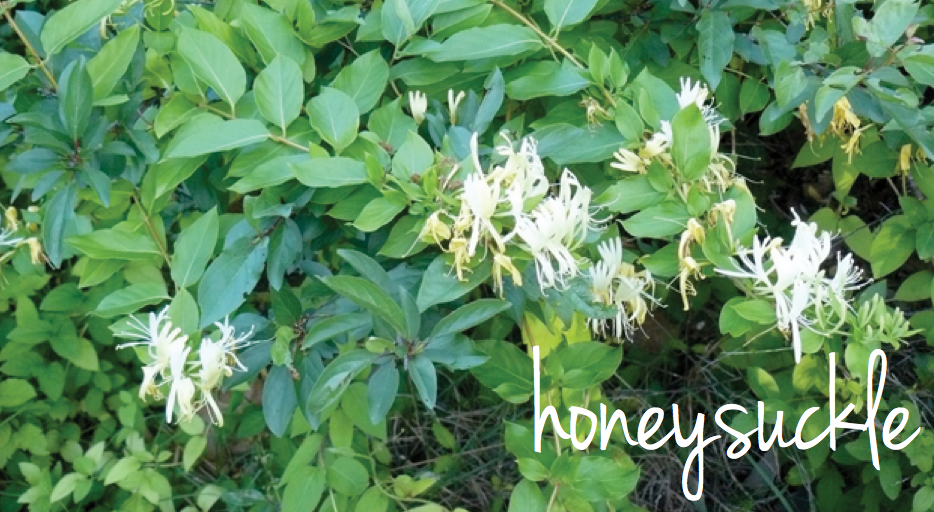
I can’t tell you how many times I carefully pulled at a honeysuckle flower as a kid, hoping to extract that one little bit of its sweet nectar. While honeysuckle evokes fond childhood memories, the soft vine and leaves provide a protein-rich food source for deer nearly year-round. Understandably, many people have a love/hate relationship with the flowering vine. Despite deer being drawn to it like a moth to flame, the Japanese variety, non-native to the U.S., is quite invasive and can overtake natural vegetation in no time, particularly seedling trees. Much like brambles, greenbriar, or grape vines, honeysuckle should be planted along a fence line, but must be carefully managed to avoid a wide-spread takeover. Be sure to check the laws to make sure it’s not illegal to propagate honeysuckle in your state.
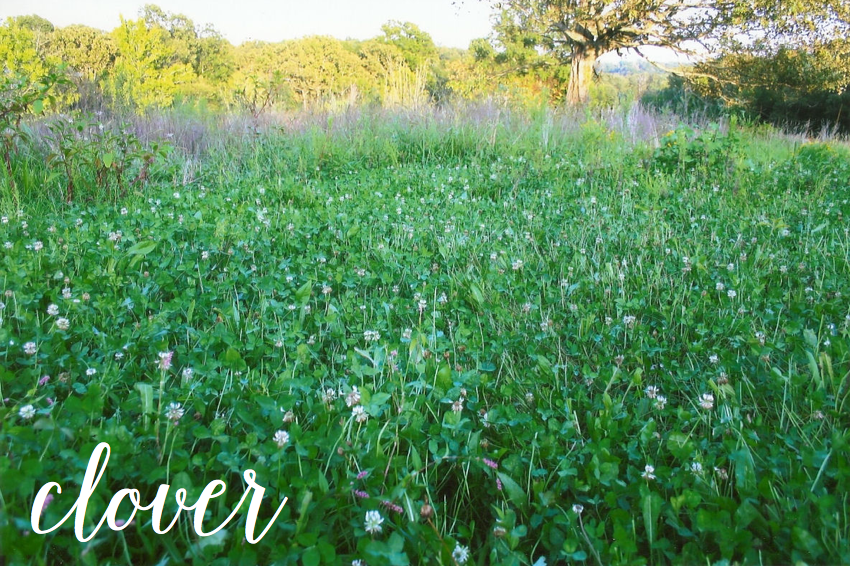
Last, but certainly not least… Clover – the magical food plot staple. Deer are naturally drawn to clover, and it is probably the most popular food plot staple for those looking to attract whitetails. It starts turning green in early spring, and remains so until late in the winter, providing a hearty source of nutritious vitamins, minerals, and protein for deer throughout most of the year. Clover is easy to grow, survives in many different conditions, and will come back for several years after planting. There are many varieties of it, so you can tailor your plots based on what will work best for your land.
